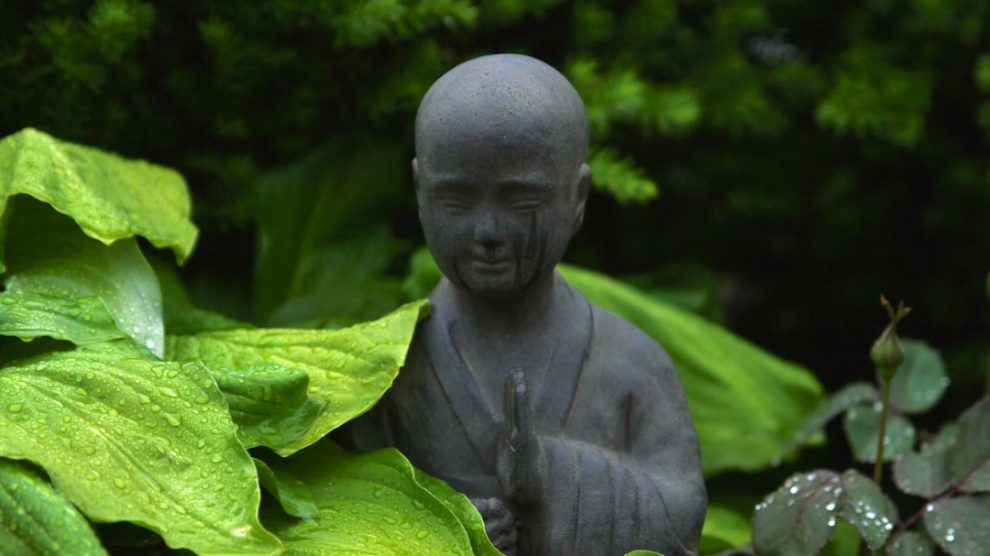Taoism, an ancient Chinese philosophy attributed to the sage Laozi, emphasizes living in harmony with the Tao, or “the Way.” This concept is not merely a philosophical abstraction; it represents the fundamental nature of the universe and the underlying principle that governs all existence. The Tao is often described as an ineffable force that flows through all things, guiding them toward their natural state. In this context, meditation serves as a vital practice for aligning oneself with the Tao, allowing individuals to tap into this universal flow and cultivate a deeper understanding of their place within it.
Meditation in Taoism is not just a means of relaxation or stress relief; it is a profound journey into self-discovery and enlightenment. By quieting the mind and turning inward, practitioners can transcend the distractions of daily life and connect with the essence of the Tao. This connection fosters a sense of unity with the cosmos, promoting inner peace and clarity.
The principles of Taoism—such as simplicity, humility, and compassion—are intricately woven into meditation practices, encouraging individuals to embrace their true nature and live authentically in accordance with the rhythms of life.
Cultivating inner stillness is a central goal of Taoist meditation, and various techniques can facilitate this process. One foundational practice is Zhuangzi’s “sitting and forgetting,” which encourages practitioners to let go of their thoughts and concerns, allowing them to dissolve into the background. This technique involves finding a comfortable seated position, closing the eyes, and focusing on the breath.
As thoughts arise, practitioners are encouraged to acknowledge them without attachment, gently returning their focus to the breath. Over time, this practice can lead to a profound sense of tranquility as the mind becomes less cluttered and more attuned to the present moment. Another effective technique for achieving inner stillness is the practice of “neiguan,” or inner observation.
This method involves directing attention inward to observe bodily sensations, emotions, and thoughts without judgment. By cultivating an attitude of curiosity and acceptance, practitioners can develop a deeper awareness of their internal landscape. This heightened awareness often leads to insights about one’s habitual patterns and emotional responses, fostering a sense of clarity and calm.
As practitioners engage in these techniques regularly, they may find that moments of stillness become more accessible, allowing them to navigate life’s challenges with greater ease.
The essence of Taoist meditation lies in its emphasis on mindfulness—the practice of being fully present in each moment. This principle aligns closely with the teachings of Laozi, who advocated for simplicity and authenticity in daily life. By cultivating mindfulness through meditation, individuals can learn to appreciate the richness of each experience without being burdened by regrets from the past or anxieties about the future.
This shift in perspective allows for a more profound engagement with life, fostering a sense of gratitude and wonder. In practical terms, embracing the present moment can be achieved through various mindfulness exercises integrated into meditation practices. For instance, practitioners may focus on their breath as a way to anchor themselves in the here and now.
By paying attention to the sensations of inhalation and exhalation, individuals can cultivate a heightened awareness of their physical presence and emotional state. Additionally, incorporating mindful walking or movement into meditation can further enhance this connection to the present moment. As one moves with intention and awareness, each step becomes an opportunity to experience life fully, reinforcing the idea that every moment is precious and worthy of attention.
Non-attachment is a core tenet of Taoism that plays a crucial role in achieving inner stillness through meditation. The concept suggests that clinging to desires, expectations, or outcomes can lead to suffering and discontentment. In contrast, cultivating non-attachment allows individuals to experience life more freely, unencumbered by the weight of their attachments.
Through meditation, practitioners can explore this concept by observing their thoughts and emotions without judgment or identification. One effective way to practice non-attachment during meditation is through visualization techniques. For example, practitioners might visualize their thoughts as clouds drifting across a vast sky.
Instead of trying to grasp or control these clouds, they learn to let them pass by without interference. This practice fosters a sense of detachment from thoughts and emotions, allowing individuals to experience them without becoming overwhelmed. Over time, this approach can lead to greater emotional resilience and a profound sense of freedom as practitioners learn to navigate life’s ups and downs with equanimity.
The concept of Yin and Yang is fundamental to Taoist philosophy, representing the dualities inherent in all aspects of life—light and dark, active and passive, masculine and feminine. In meditation, harmonizing these opposing forces is essential for cultivating inner balance and well-being. Practitioners are encouraged to explore both aspects within themselves, recognizing that each has its place in the tapestry of existence.
By embracing both Yin (the receptive, introspective qualities) and Yang (the active, outward qualities), individuals can achieve a more holistic sense of self. One way to cultivate this balance during meditation is through breathwork that alternates between different rhythms or qualities. For instance, practitioners might engage in deep, slow breathing to embody Yin qualities before transitioning to more vigorous breathing patterns that evoke Yang energy.
This dynamic interplay allows individuals to experience both states within their practice, fostering a deeper understanding of how these energies coexist within them. As practitioners learn to harmonize Yin and Yang through meditation, they may find that they become more adaptable in their daily lives, responding to challenges with greater ease and grace.
Letting Go of Striving in Meditation
In meditation, Wu Wei manifests as an invitation to let go of striving or trying too hard to achieve specific states or experiences. Instead, practitioners can cultivate Wu Wei by approaching meditation with an attitude of openness and curiosity, rather than expectation.
Cultivating an Organic Experience of Meditation
By adopting this effortless approach, individuals can experience meditation in a more organic way, where insights emerge naturally rather than being forced. This shift in perspective allows practitioners to simply be present with whatever arises during their practice, rather than seeking a particular outcome.
Discovering Spontaneous Moments of Clarity
As practitioners embrace Wu Wei, they may discover that moments of clarity and stillness arise spontaneously, reflecting the inherent wisdom of the Tao.
Nature plays a pivotal role in Taoist philosophy, serving as both a source of inspiration and a model for living harmoniously with the world around us. The rhythms and cycles found in nature—such as the changing seasons or the ebb and flow of tides—reflect the principles of balance and interconnectedness that are central to Taoism. In meditation practice, connecting with nature can enhance one’s ability to cultivate inner stillness by grounding individuals in the present moment.
One effective way to integrate nature into meditation is through outdoor practices such as walking meditations or simply sitting in natural settings. Engaging with the sights, sounds, and sensations of nature can deepen one’s sense of connection to the world while fostering a sense of peace. For instance, listening to birdsong or feeling the breeze on one’s skin can serve as powerful anchors for mindfulness practice.
Additionally, observing natural cycles—such as sunrise or sunset—can remind practitioners of the impermanence inherent in all things, encouraging acceptance and appreciation for each moment.
Integrating Taoist meditation practices into daily life does not require extensive time commitments or elaborate rituals; rather, it can be woven seamlessly into everyday activities. One practical approach is to establish short periods throughout the day dedicated to mindfulness—whether during meals, commutes, or even mundane tasks like washing dishes. By bringing awareness to these moments, individuals can cultivate a sense of presence that permeates their daily experiences.
Another effective strategy is to create intentional rituals that honor moments of transition throughout the day. For example, beginning each morning with a few minutes of mindful breathing can set a positive tone for the day ahead. Similarly, taking time at night for reflection or gratitude can foster a sense of closure before sleep.
These small yet meaningful practices serve as reminders to remain connected to one’s inner self amidst life’s busyness while reinforcing the principles of Taoism in everyday living. Incorporating these practices into daily routines not only enhances one’s meditation experience but also fosters a deeper connection with oneself and others. By embracing simplicity, mindfulness, and non-attachment in everyday life, individuals can cultivate a more harmonious existence aligned with the teachings of Taoism.
FAQs
What is the Tao of Meditation?
The Tao of Meditation refers to the practice of meditation within the context of Taoist philosophy and principles. It involves cultivating inner stillness, aligning with the natural flow of life, and achieving harmony with the Tao, or the way of the universe.
What are the benefits of cultivating inner stillness through meditation?
Cultivating inner stillness through meditation can lead to various benefits, including reduced stress and anxiety, improved mental clarity, enhanced emotional well-being, increased self-awareness, and a deeper connection to the present moment.
How does meditation align with Taoist principles?
Meditation aligns with Taoist principles by emphasizing the importance of stillness, simplicity, and naturalness. Taoist meditation practices often focus on quieting the mind, harmonizing with the rhythms of nature, and cultivating a sense of inner peace and balance.
What are some common Taoist meditation techniques?
Common Taoist meditation techniques include breath awareness, visualization, movement-based practices such as Tai Chi and Qigong, and mindfulness of the present moment. These techniques are designed to help individuals cultivate inner stillness and align with the flow of the Tao.
How can one start practicing the Tao of Meditation?
To start practicing the Tao of Meditation, one can begin by finding a quiet and comfortable space, adopting a relaxed posture, and focusing on the breath or a specific point of awareness. It’s also helpful to study Taoist philosophy and principles to gain a deeper understanding of the underlying concepts.









Add Comment